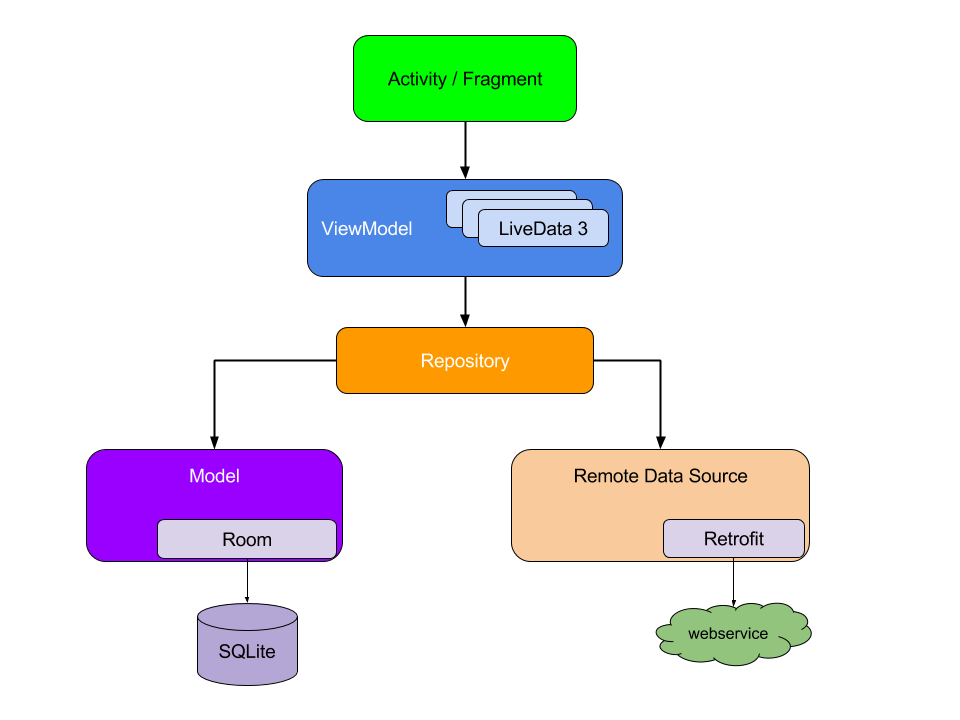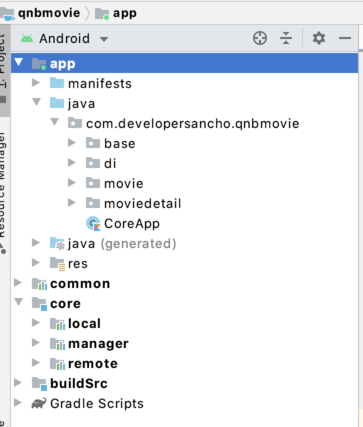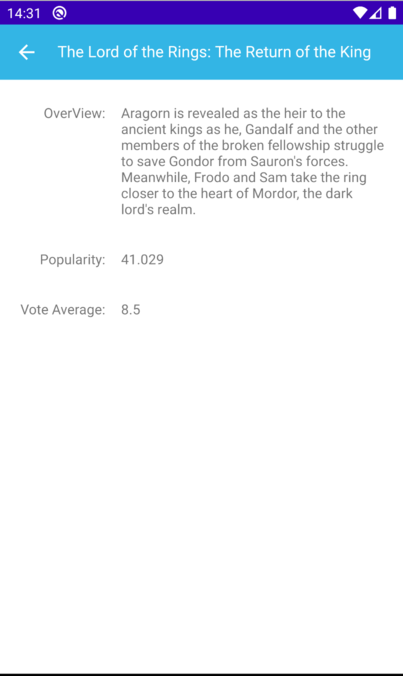A Github QNB ® Interview App illustrating current Android Architecture state using Android development best practices.
The application uses Clean Architecture based on MVVM and Repository patterns. Implemented Architecture principles follow Google recommended Guide to app architecture.
The application is written entirely in Kotlin.
Android Jetpack is used as an Architecture glue including but not limited to ViewModel, LiveData, Lifecycles, Room and View Binding. See a complete list in "Libraries used" section.
The application does network HTTP requests via Retrofit, OkHttp and GSON. Loaded data and favorite list is saved to SQL based database Room, which serves as single source of truth and support offline mode.
Kotlin Coroutines manage background threads with simplified code and reducing needs for callbacks. Combination of Coroutines and Kotlin build in functions (transformation, collections) are preferred over RxJava 2.
Koin is used for dependency injection.
Coil is used for image loading.
MVVM for Architecture Design Pattern
Multi-Module project that separated layer
*** Writed Unit Test
A sample app consist of 2 screens: Movie and Movie Detail.
The application goal is to show case current Android Architecture state using out of box Android tools made by Google (Android Jetpack) and 3rd party community driven libraries.
Android Jetpack is a set of components, tools and guidance to make great Android apps. They bring together the existing Support Library and Architecture Components and arranges them into four categories:
- Foundation - Components for core system capabilities, Kotlin extensions and support for
multidex and automated testing.
- AppCompat - Degrade gracefully on older versions of Android.
- Android KTX - Write more concise, idiomatic Kotlin code.
- Test - An Android testing framework for unit tests.
- Architecture - A collection of libraries that help you design robust, testable, and
maintainable apps. Start with classes for managing your UI component lifecycle and handling data
persistence.
- View Binding - Declaratively bind observable data to UI elements.
- Lifecycles - Create a UI that automatically responds to lifecycle events.
- LiveData - Build data objects that notify views when the underlying database changes.
- Room - SQLite database with in-app objects and compile-time checks.
- ViewModel - Store UI-related data that isn't destroyed on app rotations. Easily schedule asynchronous tasks for optimal execution.
- UI - Details on why and how to use UI Components in your apps - together or separate.
- Third party
- Kotlin Coroutines for managing background threads with simplified code and reducing needs for callbacks.
- Koin A fast dependency injector.
- Retrofit 2 A configurable REST client.
- OkHttp 3 A type-safe HTTP client.
- GSON A Json - Object converter using reflection.
- Coil Image loading.
Copyright 2020 developersancho.
Licensed to the Apache Software Foundation (ASF) under one or more contributor license agreements. See the NOTICE file distributed with this work for additional information regarding copyright ownership. The ASF licenses this file to you under the Apache License, Version 2.0 (the "License"); you may not use this file except in compliance with the License. You may obtain a copy of the License at
http:https://www.apache.org/licenses/LICENSE-2.0
Unless required by applicable law or agreed to in writing, software distributed under the License is distributed on an "AS IS" BASIS, WITHOUT WARRANTIES OR CONDITIONS OF ANY KIND, either express or implied. See the License for the specific language governing permissions and limitations under the License.




